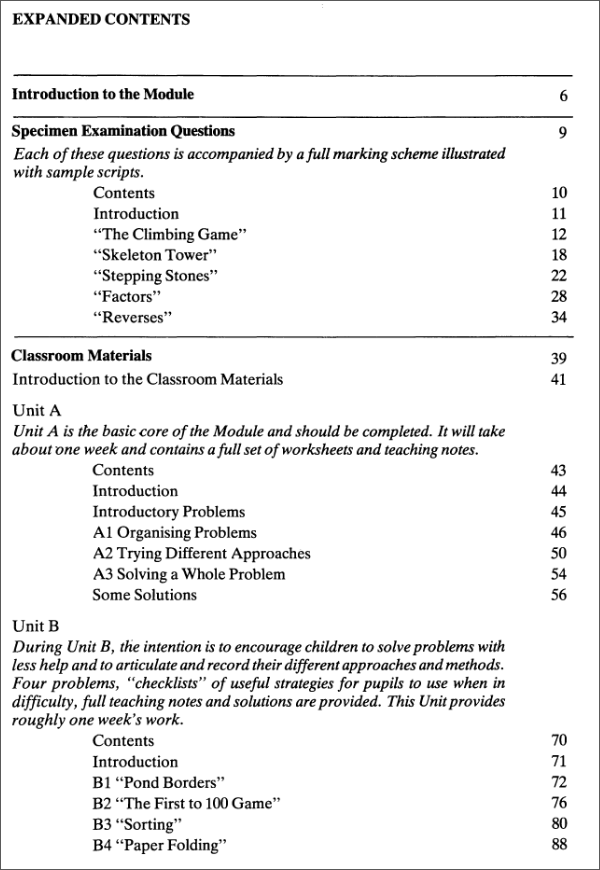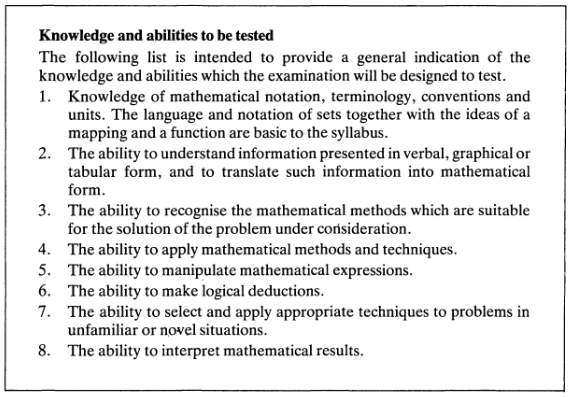30 Design Strategies and Tactics from 40 Years of Investigation
Appendix: Further information and examples
Alignment
By alignment we mean systems where policy documents, examinations, curriculum materials, and professional development all convey the same message to teachers and schools on the balance among learning priorities.
Teachers get many pressures from other groups in 'the system' on what they should do – in particular on the balance of learning activities in the classroom. Often these messages are mixed, reflecting different priorities. System government will have curriculum documents where the rhetoric is about broad student learning but the detail is focused more narrowly – often emphasising procedural skills and knowledge rather than on conceptual understanding, reasoning and problem solving. High-stakes tests typically assess only the former. Professional development emphasises the latter. Alignment in strategic design is ensuring that all these elements are in harmony, conveying the same message.
Here we point to three projects that have approached alignment in rather different ways.
College and Career Readiness
This collaborative program, designed to support the realisation of the US Common Core State Standards, was created and funded by the Bill & Melinda Gates Foundation. The whole enterprise involved diverse elements:
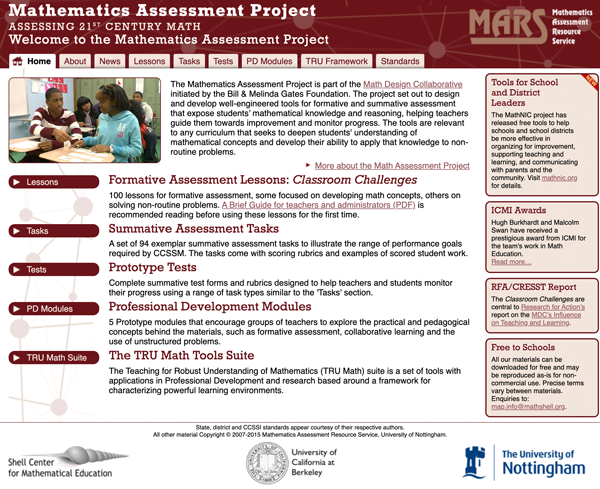
MAP website
- The Common Core State Standards in Mathematics (CCSS-M) were designed and developed by a small team for the Council for Chief State School Officers (CCSSO, "The Chiefs")
- 20 formative assessment lessons (FALs) for each grade 6 through 10 were the teaching materials around which the mathematics program was based. They were designed by the Shell Centre team and developed with feedback from trials in US classrooms by the Mathematics Assessment Project.
- A program of professional development sessions built around the FALs was developed in various states across the US
- The high-stakes assessment was developed by two consortia of states (Smarter Balance and PARCC), funded by the US government to design high-validity assessment of CCSS-M. As so often and despite good intentions, this became the least well aligned component – other pressures changed the priorities of the consortia towards fairly traditional short-item tests.
The project had some positive impact. The Standards attracted a lot of opposition but became the de facto benchmark for the many states that set out to develop their own standards. There have been over 8,000,000 lesson downloads of the FALs. Evaluations in a state with a strong PD component showed substantial gains in student performance and teachers' pedagogy, also reflected more widely. Alignment score: 3 out of 4?
Links to materials:
- Mathematics Assessment Project
- https:/map.mathshell.org
Bowland Maths
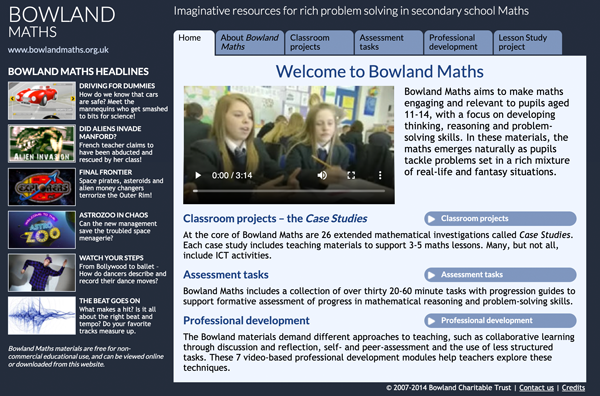
Bowland Maths website
Bowland Maths is a coherent collection of materials for teaching, assessment and professional development. The 'case studies', for classrooms in the age range 11-14, are 4-5 lesson units where students work together to tackle problems from outside mathematics. The professional development modules are designed for use by teacher groups without an expert leader.
Although the project was originally conceived independently, the development process coincided with a major revision of the Mathematics National Curriculum for England (2008). These revisions placed new emphasis on ‘problem-solving’ skills in the form of the ‘Key Processes’ of:
- Representing
- Analysing (reasoning)
- Analysing (procedures)
- Interpreting and evaluating
- Communicating and reflecting
The Bowland Maths concept was ideal for promoting these – the ‘case studies’ were naturally rich in representing, analysing, interpreting and communicating. The materials were cross-referenced with the Key Processes and the assessment tasks included teacher guidance on how to evaluate students’ progress in less structured tasks without traditional point-scoring rubrics. A complete Professional Development module on ‘Assessing the Key Processes’ was added to specifically support this.
The initial run of Bowland Maths DVDs was funded by the Department for Education and made freely available to all schools in England. An extended second addition was later made available online.
See also Lessons as Drama for some more examples of Bowland Maths materials, or visit the Bowland Maths website.
Links to materials:
- Bowland Maths website
- https://www.bowlandmaths.org.uk
Testing Strategic Skills
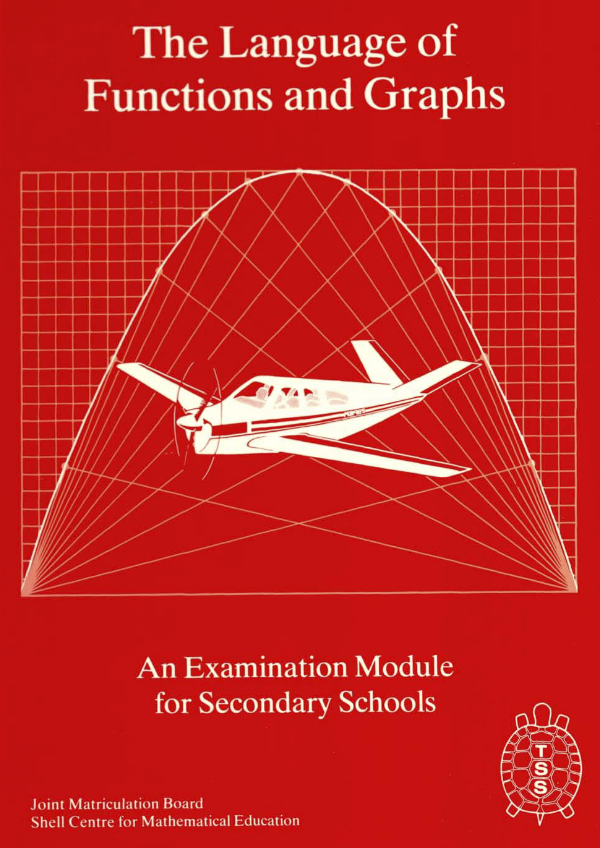
Link to materials…
This is the most coherent example of alignment. Driven by WYTIWYG, alignment was the key strategic design goal of the project. Each TSS module supported teachers with:
- tasks that exemplify the new task type to come into the examination in the following year, with teaching hints, solutions and scored examples of student work
- teaching materials for the corresponding three weeks of teaching
- professional development materials to support do-it-yourself sessions among teachers within a school, focused on the new pedagogical and mathematical challenges involved in the module
- system pressure to implement the new material was ensured through the inclusion of this new element in the Board's high-stakes examination.
All four elements were designed by the same joint JMB-Shell Centre team.
The example given here is the expanded list of contents of the first module – Problems with Patterns and Numbers (PPN) – which introduced non-routine problem solving in pure mathematics. This key part of doing mathematics was already listed in the Board's "List of knowledge and abilities to be tested" - below – particularly 7 – but not actually assessed in the examinations.
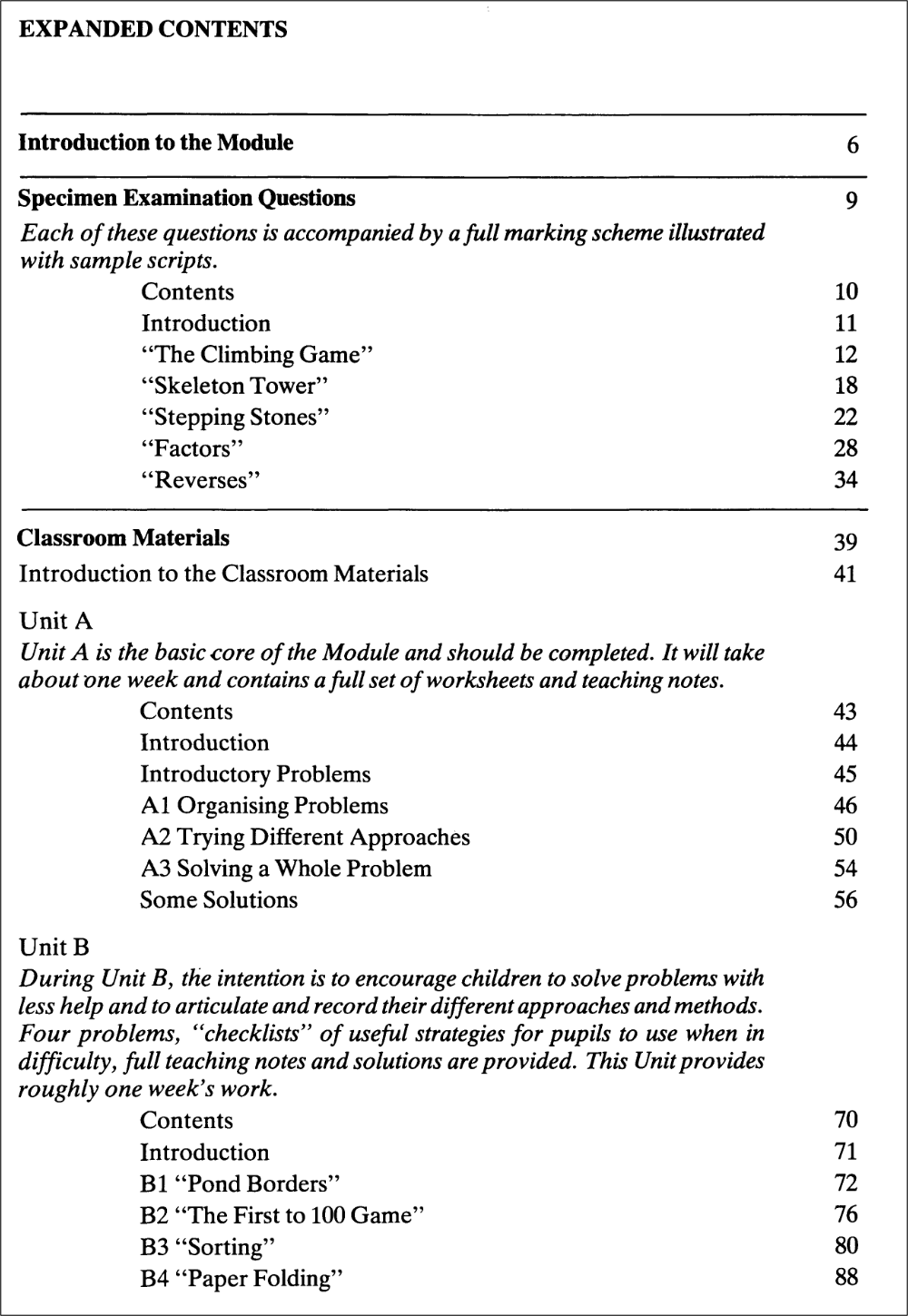
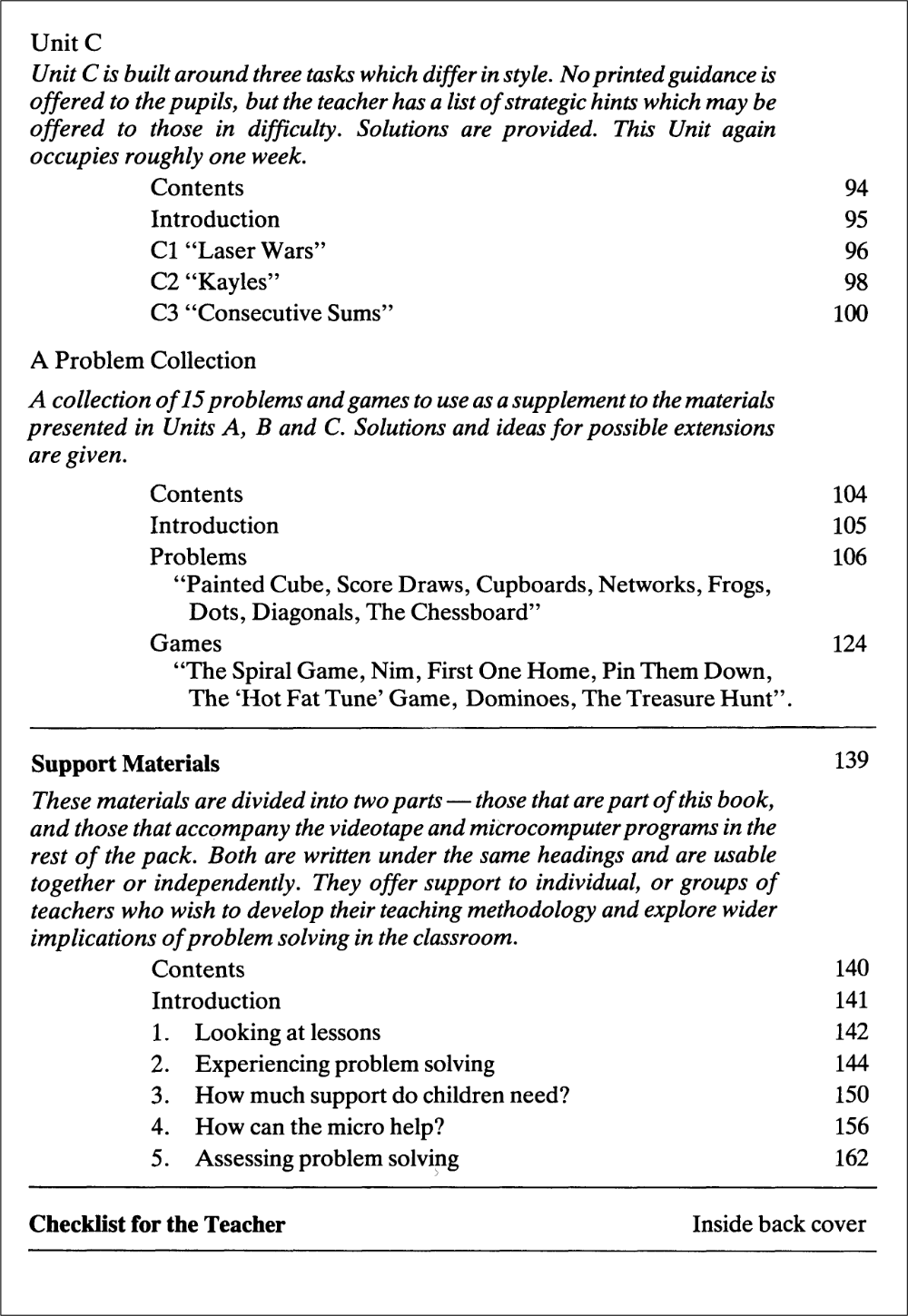
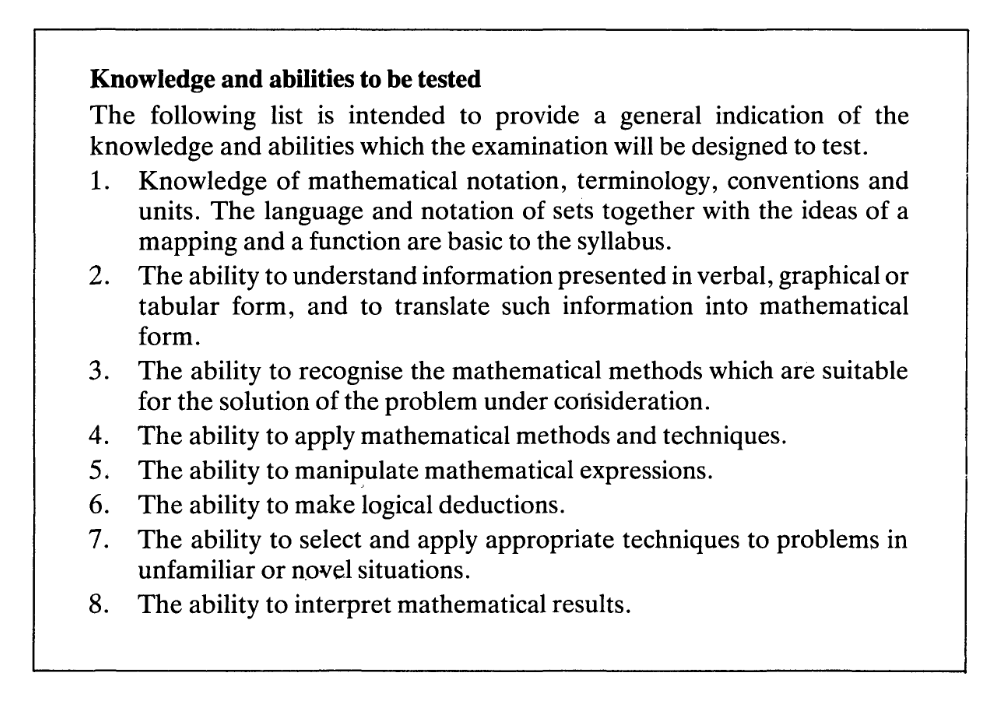
Links to materials:
- Problems with Patterns and Numbers
- https://www.mathshell.com/materials.php?series=tss&item=ppn
